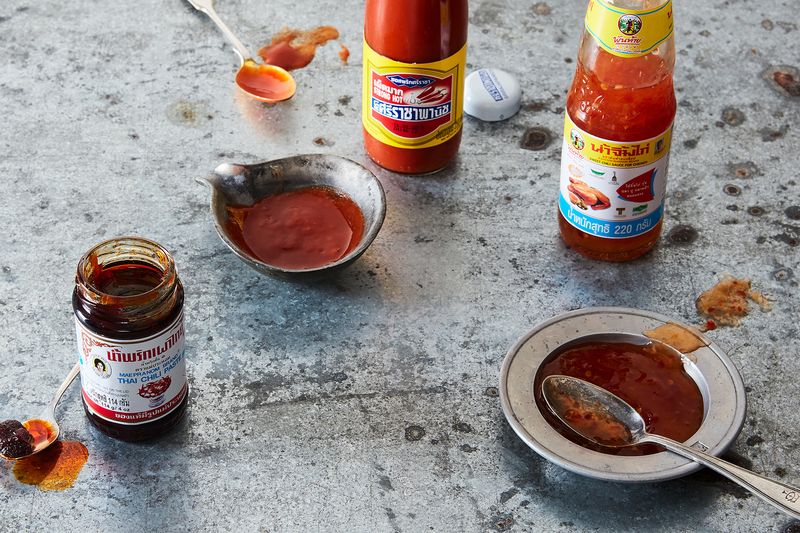While our Cookbook Club’s April book is “simple” in name, Leela Punyaratabandhu’s Simple Thai Food: Classic Recipes from the Thai Home Kitchen doesn’t shy away from authenticity.
In the book, she shares a selection of her family’s most-beloved Thai recipes, many of which don’t require anything more than what you’ve already got in your pantry; however, a few of Punyaratabandhu’s recipes do require stocking a basic Thai pantry. And yes, while in the age of Amazon, it’s remarkably easy to get even the most esoteric ingredients shipped straight to your doorstep (we’re looking at you, tamarind pulp!) sometimes you just need a weeknight pad Thai fix.

by Leela Punyaratabandhu
We get that—and luckily, Punyaratabandhu does too. She offers numerous ingredient substitutions throughout the book, especially when it comes to sometimes harder-to-find produce, such as long beans and water morning glory. After all, she writes, “cuisine exists to serve us, not the other way around, and cooking should be enjoyable.”
With that in mind, here are four additional easy-to-find substitutes for common Thai ingredients.
Fish Sauce
While fish sauce is commonly found in even your average supermarket now, vegetarians and vegans avoid it for obvious reasons, as do many with shellfish allergies. So how do you get the punchy umami kick without turning to the bottled stuff? Cook’s Illustrated discovered that a salty broth made from mushrooms, salt, and soy sauce could be used in a 1:1 ratio with the real deal. Alternatively, a tablespoon of soy sauce can be mixed with a finely-minced anchovy fillet (scaled up or down depending on your recipe needs).
Palm Sugar
While Punyaratabandhu recommends buying palm sugar in its soft, pasty form, it’s often sold in giant blocks or wheels, which need to be grated. If real palm sugar eludes you, use light brown sugar. And as one Food52 reader points out on the Hotline, dried and hardened brown sugar can be grated or melted just the same. Readily-available coconut sugar is also an option.
Makrut Lime Leaves
These are “not even close to being interchangeable in the minds of Thai cooks,” writes Punyaratabandhu—but we’re going to tell you to do it anyway because these leaves are among the most difficult Thai ingredients to source. Dried leaves are stripped of the natural oils that make them so unique in the first place, but Punyaratabandhu does point out that frozen, fresh leaves are available online. Alternatively, many chefs find that lemon verbena delivers a similar flavor profile, as does lime zest to taste.
Green Papaya
This fruit is a staple in Thai cuisine, where it’s mostly treated as a vegetable. Some markets, points out Punyaratabandhu, even sell it pre-grated, by the pound, which can save you a lot of trouble—and your knuckles. If you can’t find green papaya, swap in regular papaya in a pinch, but it must be wholly unripe and rock hard.
Ready to join in the fun? Catch up on what the Cookbook Club’s up to this month, here.
(via Food52)
